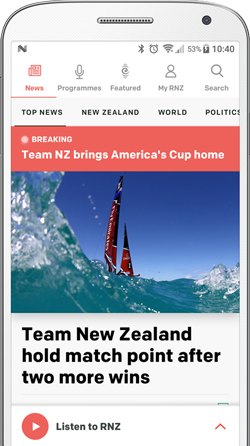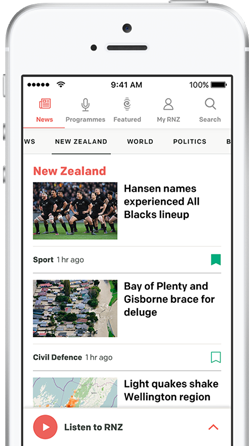
Photo: LDR / Stephen Forbes
Health New Zealand is embarking on a $20 billion-plus hospital build programme ordered by the government, when its own report states it "cannot effectively plan for asset renewals, replacements or optimise maintenance strategies".
At the same time the government released its 10-year hospital build plan on Wedneday, a report on how Health NZ Te Whatu Ora is currently doing with its existing buildings said Health NZ "does not have a consistent understanding of its asset related risks and its priorities for investment."
The agency was at significant risk that "we will not invest in the right place at the right time or meet government expectations around providing a prioritised pipeline of capital investments," it said.
The National Asset Management Strategy (NAMS) report set out ways to get better at managing assets worth $38b but it did not envisage that improving to even an "intermediate" level in order to "meet government expectations for investment and asset management" until 2028 at the earliest.
It envisaged Health NZ "starting to remedy the current state of our assets and asset management practices" from mid-2025 on.
The 10-year infrastructure plan is expected to deliver more facilties over the next decade and put more pressure on Health NZ to manage them.
Asked who he would rely on to replace health facilities given Health NZ's current situation, Health Minister Simeon Brown said the 10-year build plan alongside the NAMS allowed "investments to progress with confidence".
The 10-year plan enabled Health NZ to target resources to immediate priorities, while the asset management strategy "develops improved asset management practice across all Health NZ", Brown said in a statement to RNZ on Wednesday.
"Making improvements will take time and that is why Health NZ has developed the NAMS." It provided an evidence-based approach to look after, maintain and operate the assets, to understand risks and issues and "help inform how major investments are delivered".
The NAMS strategy report said other significant risks were that the new investments would not make the required savings from a more standardised building approach, perpetuate "poor time and cost estimates" and mean "we cannot plan infrastructure investments properly or confidently."
The 57-page report, published in February and released publicly on Wednesday, is the first of its kind for improving its asset management, Health NZ said.
Health NZ, and previously the DHBs and ministry, have known for at least five years that asset management was weak and reactive, focused on bandaid instead of long-term fixes. The report makes clear it remains that way.
It ranks Health NZ asset management at the lowest two levels out of five of 'aware' or 'basic', in the red and orange zones, repeating a ranking given last year by Infrastructure NZ.
Health NZ said it had inherited a fragmented system that contributed to facilities being degraded.
"This has resulted in a lack of strategic direction and planning and inconsistencies that will take time to align."

Health Minister Simeon Brown. Photo: RNZ / Reece Baker
Gaps for years
Brown said addressing ageing health infrastructure that obstructed patient care required "a long-term plan to both renew existing capacity, and invest in new facilities".
The agency said: "We know we cannot build our way out of our infrastructure situation. We need to better manage the existing health estate and identify and prioritise investments."
Previous ministers, the health ministry and DHBs have said largely the same thing for years, at least since RNZ revealed in 2018 the state of Middlemore Hospital, beset by tens of millions of dollars of leaks, and sewage pipes crumbling in the walls
This helped spark the first health facility national stocktake in 2020, which promised an asset management strategy by 2022; it has taken three years more.
Five years on from the 2020 stocktake that gave rankings for many thousands of hospital buildings and systems, Wednesday's NAMS showed:
- There is still no single nationwide source of asset information or an asset register
- Thirty-four hospital campuses have been assessed to identify the most risky systems that need the most urgent fixes, but another 52 campuses have not been assessed
- Understanding of earthquake risks remains patchy and hard to pin down, relying mosty on a 2022 report, and holding up strengthening.
"There are still significant gaps in our understanding of the condition of our health estate," the report stated.
"We have initiated a number of workstreams to help address the gaps, which have uncovered further issues with the current state of our assets."
For instance, the 2023 campus survey found almost 500 of very high or high priority risks in essential systems like water and power. A large chunk of the riskiest ones have not been fixed yet or not begun to be fixed, as RNZ reported earlier this month this month after a long-delayed OIA.
Not only has Health NZ not comprehensively assessed its assets since the 2020 stocktake, but what approach it adopts to do this will only be finalised in June, Wednesday's report said.
It will also be June before the agency approves a policy and strategy on asset management.
The Infrastructure Commission Te Waihanga last November rated health especially badly saying it "has highly critical infrastructure but poor asset management and poor physical infrastructure that affects wellbeing and health outcomes".
"We want someone to be accountable" at Health NZ and the other agencies, the commission said.
Health NZ said it had accountability systems in place.
"We are building on those, starting with an asset class leader's forum established with representatives from across our core asset functions," the agency's statement said.
One of the forum's first outputs was to develop an asset management policy.
The plan to fix it
Health NZ has tried structural reform before. Two years ago it set up a new national infrastructure team, but this then got caught up in its mass restructure triggered by a financial meltdown a year ago.
Wednesday's report lays out a fixit plan in three stages.
First is setting up the policy and approach by June to set some consistency.
From June till mid-2028 it would work on '"foundational activities".
This would include "baselining the estate to understand the condition of our assets" and setting up a national asset register.
"It will also ensure we obtain a good understanding of our health and safety risks."
It is not clear why some of this basic work has not already been done since the 2020 stocktake, however, that period has featured fragmentation under the DHBs and the failed centralisation under Te Whatu Ora.
Next from 2028 to 2031 and beyond, would be the third stage of the fix.
"For Horizon 3 and beyond we expect to have the foundations in place ... This includes managing our assets to meet the required levels of services.
"Towards the end of Horizon 3 we should have our asset management practices embedded.
"The future state will address how we ... meet government expectations for investment and asset management."
Sign up for Ngā Pitopito Kōrero, a daily newsletter curated by our editors and delivered straight to your inbox every weekday.





